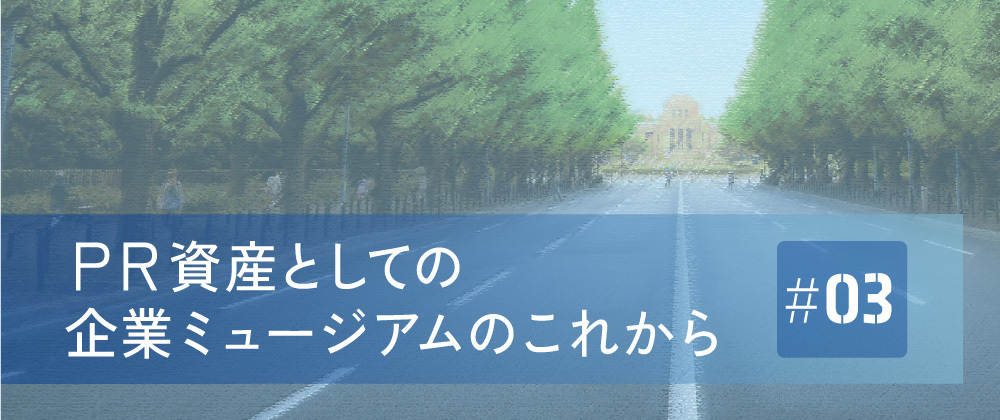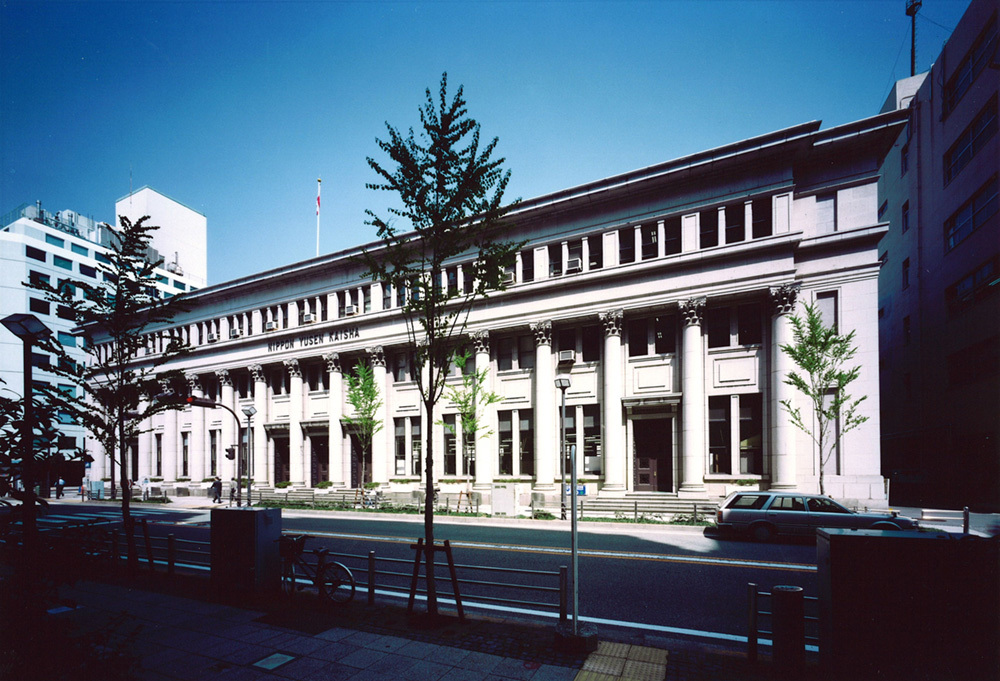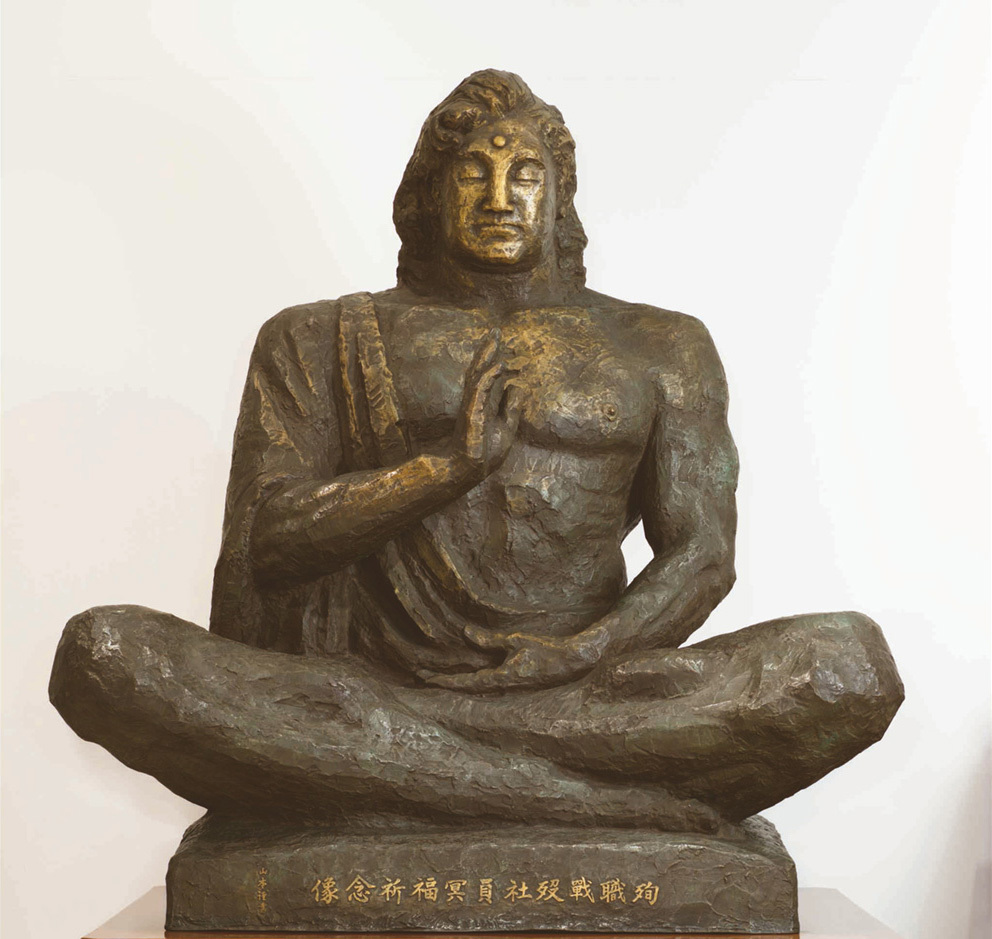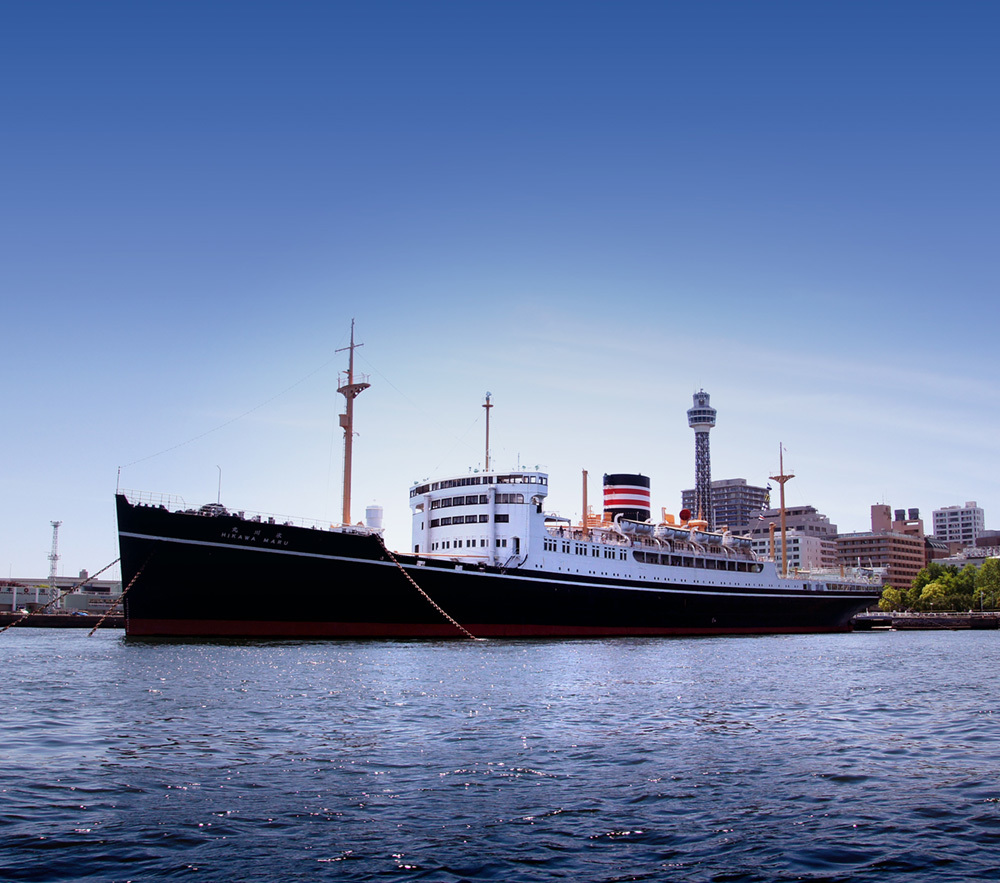Note: This website was automatically translated, so some terms or nuances may not be completely accurate.
The Nippon Yusen Historical Museum: Preserving the "History of Shipping" for Japan, a Major Trading Nation

Corporate museums occupy a buffer zone straddling both the academic realm of "museums" and the business domain of "corporations." They are organizations that collaborate diversely with corporate departments such as public relations, branding, advertising, and human resources. This series features PR professionals introducing various corporate museums, exploring their roles, functions, and potential.
NYK Line has led Japan's shipping industry. Beyond documenting its own history, the company operates the NYK Line Historical Museum to preserve and exhibit historical materials of Japan's shipping industry and promote maritime awareness. This article explores the essence and significance of logistics through the museum's initiatives, which contribute to the local community as a member of the regional society and as a venue for industrial tourism.
Reporting and Text: Akemi Sakurai (PR Consulting Dentsu Inc.)

A stroll from Minatomirai and Sakuragicho Station across Benten Bridge, along Kaigan-dori, through Yamashita Park Street, past Yamashita Pier, Motomachi, Port View Hill Park, and the Yamate Western-style Houses is a model Yokohama sightseeing route. Standing serenely in one block of Kaigan-dori, flanked by the symbolic twin towers—King (Kanagawa Prefectural Government Building) and Queen (Yokohama Customs)—is the Nippon Yusen Historical Museum featured here. "Surrounded by sea and lacking natural resources, Japan relies on imports for most of the essential goods needed for daily life and industry—food, oil, gas, iron ore, and more," explains public relations officer Naoko Iwakuma. "Over 90% of these goods are transported by ship. Maritime shipping plays an indispensable role in Japan."
The Nippon Yusen Historical Museum opened in June 2003 on the first floor of a building constructed in 1936 (Showa 11) as the Nippon Yusen Yokohama Branch after the Great Kanto Earthquake. Its operational objectives include preventing the loss and preserving historical materials, providing information to researchers, promoting maritime ideology (*), employee education, and contributing to the local community. Its predecessor, the NYK Historical Archives, was located in a former warehouse nearby since 1993. It was relocated to the Yokohama NYK Building on a main thoroughfare to increase accessibility and awareness.
※Maritime Ideals: Comprehensive knowledge related to the sea, including its utilization, maritime transportation, the marine environment, and maritime safety.

Regarding the museum's target audience and departmental collaboration
The target audience is the general public. The museum is also utilized for students' social studies learning and new employee training at group companies. It aims to objectively convey, through facts, how Japan's shipping industry has been intertwined with people's lives. Located in central Yokohama, it attracts many domestic and international tourists as well as students. Some schools outside the prefecture focus on maritime education and consistently include it in their field trip itineraries every year. Free admission slots are also available for maritime/ocean-related specialized schools and their teachers.
The Head Office Public Relations Group falls under the Corporate Planning Division, while public relations for the "History Museum" and the "Hikawa Maru" are handled by separate departments within the General Affairs Division. However, for announcements regarding special exhibitions and events, they collaborate with the Head Office Public Relations Group to disseminate information. There is also frequent collaboration with the Human Resources Group and the ESG Management Promotion Group.
Passing on the wish for peace to future generations
Upon entering the reception area, visitors are immediately greeted by the "Statue Commemorating the Souls of Employees Who Died in the Line of Duty," created by sculptor Seibo Kitamura, who also crafted the Nagasaki Peace Statue. "During the Pacific War, 5,312 employees lost their lives," explains Susumu Akeno, Acting Director. "The military command at the time likely underestimated the critical importance of escorting transport ships." During wartime, civilian ships were requisitioned by the government to transport supplies and troops, but they became enemy targets, and many lives were lost along with the ships. The total number of lives lost across the entire industry was approximately 60,000, representing nearly one in two seamen (43%), a casualty rate 2.6 times higher than that of Navy personnel.
"America's strategy was 'to sink merchant ships.' They aimed to starve the island nation of Japan dry," explained Mr. Akeno. Here, photographs of the 185 ships sunk from Nippon Yusen are displayed. The only large ship to survive was the Hikawamaru, which served as a Navy auxiliary hospital ship during the war and was later retired, moored at Yamashita Park.
 Statue Commemorating the Souls of Employees Who Died in the Line of Duty (Photo courtesy: NYK Historical Museum)
Statue Commemorating the Souls of Employees Who Died in the Line of Duty (Photo courtesy: NYK Historical Museum)Civilization, Enlightenment, and the Dawn of Maritime Transport
NYK's history overlaps with the opening of ports, Japan's modernization, and the history of war. It was in 1871 (Meiji 4) that Yataro Iwasaki, founder of the Mitsubishi Group, took over the shipping company Tsukumo Shokai, operated by the Tosa Domain, and established his own independent business. The centerpiece of the "1. Opening Japan" corner is a "rainwater barrel" engraved with the Mitsubishi Group's symbol, the "Three Diamonds," and the characters for Tsukumo Shokai (Tsukumo Shokai). This firefighting water bucket was made by Kamaroku (Kamaya Rokubeemon) of Fukagawa. Though the Mitsubishi mark appears slightly thinner than today's version, it was created by combining the Yamauchi family crest of the Tosa domain, the "Three Oak Leaves," with the Iwasaki family crest, the "Triangular Diamond."

Another feature of the museum is its extensive collection of video materials. Stepping on a switch modeled after a compass on the floor triggers a presentation. Alongside commemorative photos of Yataro Iwasaki, his younger brother Yanosuke who succeeded him, and subsequent Mitsubishi Group executives, valuable video materials provide explanations.
At the time of port opening, Japanese ships were essentially Edo-period sailing vessels. With the opening of ports, Western ships like American 3,000-ton class steamers dominated coastal shipping in Japan. The Meiji government recognized the urgent need to modernize its own shipping industry, a necessity particularly driven home during the 1874 (Meiji 7) expedition to Taiwan. During this overseas deployment, Yataro Iwasaki was entrusted with transporting troops, earning the government's trust. He was particularly valued by figures like Okuma Shigenobu, Minister of Finance, and Ōkubo Toshimichi, Minister of Home Affairs, enabling him to rapidly expand his company. Mitsubishi Shōkai (renamed from Kyūjū Shōkai) established Japan's first regular shipping route to Shanghai in 1875 (Meiji 8). This route connected Yokohama, Kobe, Shimonoseki, Nagasaki, and Shanghai with weekly service.
Simultaneously, in 1875 (Meiji 8), the Mitsubishi Merchant Marine School was established by government order to train Japanese senior officers. Photographic records show that, following the British model, a ship moored on the Sumida River served as the school building, with students boarding in the ship's cabins while studying. After the war, the Mitsubishi Merchant Marine School became Tokyo Shosen University. It later merged with Tokyo Suisan University and is now known as Tokyo University of Marine Science and Technology.
The Secret History of Nippon Yusen's Birth
Life rarely sails smoothly, and the Mitsubishi Mail Steamship Company (renamed from Mitsubishi Trading Company) faced trials due to the assassination of its key government supporter, Okubo Toshimichi, the fall from power of Ōkuma Shigenobu, and the subsequent rise of anti-Mitsubishi factions. The government supported the establishment of a semi-public, semi-private joint transport company, sparking a fare-cutting competition with Mitsubishi Steamship Company. This drove both companies toward mutual ruin. During this period, Yataro passed away. His younger brother, Yanosuke, took over the business.
After three years of competition, the two companies merged under government mediation, giving birth to Nippon Yusen Kaisha (NYK Line). With the establishment of the new company, Yanosuke relinquished the shipping business. He then proceeded to found, one after another, the operating companies that would form the core of today's Mitsubishi Group. The "2. The Untold Story of NYK's Birth" section displays panels and materials introducing key figures indispensable to the history of Japan's modernization.
Opening to the World
Thus, Nippon Yusen was born in 1885 (Meiji 18). The following year, it established the Nagasaki-Tianjin route. In 1893 (Meiji 26), it opened Japan's first transoceanic liner service to Bombay (present-day Mumbai, India), handling cotton imports. It continued to actively develop new routes and expand its business.
One year after the Bombay route's launch, the First Sino-Japanese War began. Like other shipping companies, NYK's vessels were requisitioned by the government. Fortunately, significant damage was avoided this time. However, a decade later during the Russo-Japanese War, the company suffered catastrophic losses of both ships and crew. A valuable magazine from 1901 (Meiji 34), "Yusen Zue" (Illustrated Mail Steamer), detailing the customs of the era and life aboard ships, is on display. An article by a reporter from Toyodo's "Fusoku Gahō" (Illustrated Magazine of Customs and Manners), describing their voyage aboard Nippon Yusen's cargo-passenger ship Kasugamaru, is introduced with illustrations.
The Dawn of the Luxury Liner Era
Among the exhibits, the model ships of luxury liners are particularly popular. These ships, which gained attention in the early Showa period after overcoming a difficult era marked by the Great Depression following the end of World War I, are displayed. Known as builders' models, these 1/48 scale models were gifts from shipbuilders to owners. The 17,000-ton Asama Maru, which sailed the San Francisco route, was built at Mitsubishi Shipbuilding Co., Ltd.'s Nagasaki Shipyard.
By this time, domestic shipbuilding had reached world-class standards. A model ship of the Hikawamaru, the only surviving cargo-passenger ship built before the war, is also on display. This ship, which carried many celebrities including Prince and Princess Chichibu and Charlie Chaplin, was built in 1930 (Showa 5) at Yokohama Shipyard, located in what is now the Yokohama Minato Mirai district.
"Looking at the print quality and paper stock of the pamphlets used as promotional tools back then, you can see how much effort Nippon Yusen put into advertising," says curator Akane Endo. Posters featuring three personified women representing the luxury liners known as the "NYK Three Sisters" – the Nitta Maru, Yawata Maru, and Kasuga Maru, whose names begin with letters representing NYK's English company name – were created by artist Ryohei Koiso. Also on display are rare items for the time, such as ship-shaped pamphlets ordered from overseas and fan-shaped pamphlets.
The iconic funnel mark—a black funnel with two red stripes—is instantly recognizable as Nippon Yusen's symbol. This distinctive funnel mark first appeared around this time, in 1929 (Showa 4).


Rebuilding and Transformation into a Comprehensive Shipping Company
Japan emerged as a defeated nation. Nippon Yusen lost many employees and most of its ships; wartime compensation for vessels requisitioned by the government was terminated. Its headquarters building and the Yokohama Yusen Building, which houses the Nippon Yusen Historical Museum, were seized by GHQ (General Headquarters of the Allied Powers). Postwar recovery began from scratch. Initially, GHQ maintained a strict stance toward the shipping industry to prevent Japan's rearmament. However, the onset of the Cold War with the Soviet Union led to a significant shift in policy.
Thus, alongside the trend of heavy and capital-intensive industries supporting Japan's period of high economic growth, the shipping industry experienced dramatic development. Cargo ships on regular routes transformed into container ships loading and unloading cargo in containers. Tramp ships evolved into specialized vessels like car carriers for automobiles and LNG carriers for liquefied natural gas.
NYK also expanded its business from a liner shipping company to a comprehensive shipping company. At its founding, ship operations were learned from foreigners. Later, operations became possible with only Japanese crew members. Now, ship operations are again largely entrusted to many foreigners. Japanese crew members have shifted to the role of teaching them the skills.
The Environment and the Shipping Industry
The challenge ahead is how to operate environmentally friendly ships. The NYK Historical Museum hosts special exhibitions primarily focused on three themes: history, art, and corporate introduction, in addition to its permanent exhibition. A special exhibition themed on technological development related to ship operation introduced new energy-saving technologies from group companies. Nippon Yusen, buffeted by the tides of time yet desperately adapting, has supported the Japanese economy through shipping. Today, it faces another major challenge from the times and continues to rise to the occasion.
The Lucky Ship, Hikawamaru
After visiting the NYK Historical Museum, you'll likely want to extend your trip to see the Nippon Yusen Kaisha Hikawamaru. The Hikawamaru, the only large passenger-cargo ship to survive World War II, has been moored at Yamashita Park in Yokohama since 1961 and was designated a National Important Cultural Property in 2016. It's a place children in Yokohama City visit at least once on field trips or school outings.

The first-class cabins, dining room, and lounge still evoke the romance of the sea and the atmosphere of old-time ocean travel for visitors today. Named after Omiya Hikawa Shrine, the Hikawamaru served as a cargo-passenger ship, then as a hospital ship during the war. For five years after the war, it transported repatriates. It then resumed service as a cargo-passenger ship until 1960, carrying a total of approximately 90,000 people. "We never fail to visit Hikawa Shrine to pray for the safety of everyone aboard, including our passengers, the safety of the Hikawamaru herself, and the continued prosperity of Nippon Yusen Kabushiki Kaisha," said Captain Takatoshi Ouchi.


Active as a Member of the Local Community
Before the pandemic, the ship also played a role as a member of the local community, hosting tours of the Hikawamaru every year on Marine Day. "The museum offers workshops where participants build ships using blocks," explains curator Endo. "For these, we ask young seafaring employees from the Maritime Personnel Team within the Human Resources Group to serve as instructors." The children, he notes, listen intently with sparkling eyes as the smartly uniformed sailors introduce their onboard work.
Although currently suspended due to COVID-19, the Nippon Yusen Historical Museum previously hosted events like concerts, nautical chart drawing classes, and paper craft workshops. Widely used for field trips by children in the city, the Nippon Yusen Hikawamaru provides practice space for the Yokohama Boys and Girls Choir and hosts mini-concerts during events. It also contributes to the community by co-hosting an elementary school painting contest with the Historical Museum.
After the interview
While the number of people directly involved in shipping or who experience sea travel may not be large, the NYK Historical Museum and the NYK Hikawamaru play a significant public relations role in raising awareness and understanding that "shipping" is connected to all aspects of daily life. I sincerely hope many people will visit and learn about the achievements of the company and the shipping industry.
The Nippon Yusen Historical Museum website is here.
For an overview of the Nippon Yusen Hikawamaru, click here.
[Editor's Note]
Given that this museum centers on NYK, which has supported Japan's logistics since the Meiji era, I found myself pondering the concept of "movement lines." The NYK Historical Museum awaits you after strolling through Yokohama, feeling the sea breeze. This "movement line" itself is one of the first delights of museum-hopping.
Once inside, you're immersed in a "path" spanning nearly 140 years of history. It's not merely an introduction to the NYK company. You experience the very history of Japan's logistics firsthand.
After spending time completely overwhelmed by its sheer scale, step outside and gaze at the sea. Thoughts naturally drift to the "path" to the world, the "path" to the future. It feels like you've been treated to a magnificent "path" stretching from the past, through the present, and into the future.
Was this article helpful?
Newsletter registration is here
We select and publish important news every day
For inquiries about this article
Back Numbers
Author

Sakurai Akemi
PR Consulting Dentsu Inc.
Since joining the company, I have been involved in PR planning for a wide range of companies and organizations as a media liaison and sales representative. Currently, I am engaged in new client development, which includes managing seminars and publishing the <a href="https://prx.dentsuprc.co.jp/" target="blank">PRX Magazine</a> newsletter. PRX Magazine|Bringing PR expertise to every business domain|PR Consulting Dentsu Inc. received the Japan PR Association PR Award Grand Prix in 2009 for "Japan Agricultural Products Competition in China" and the Asia-Pacific SABRE Award CSR Category Prize in 2011 for "Spa Resort Hawaiians National Kizuna Caravan." Certified PR Planner by the Japan Public Relations Association.




